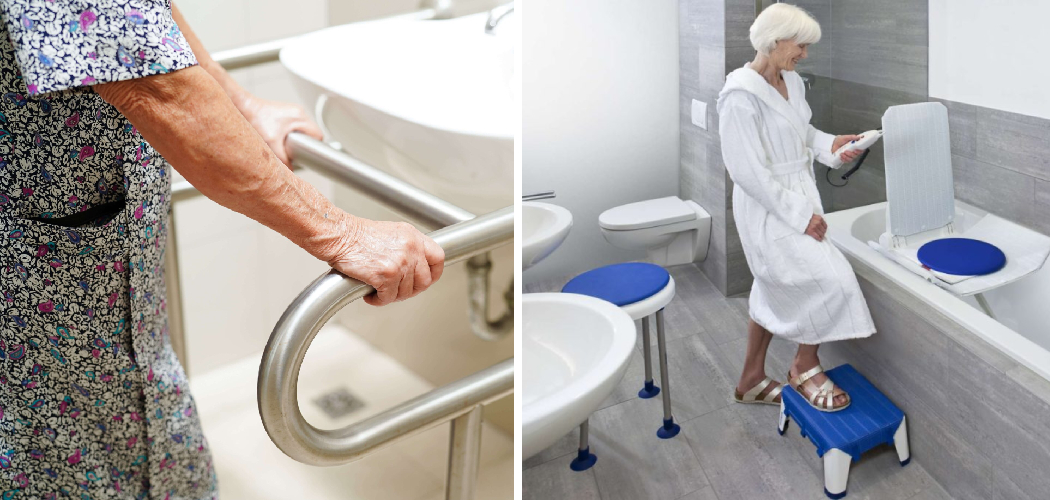Ensuring the safety of elderly individuals in the bathroom is paramount, particularly when it comes to the bathtub, where slips and falls can result in serious injuries. Making a bathtub safe for the elderly involves implementing various modifications and precautions to minimize the risk of accidents and promote independent bathing.
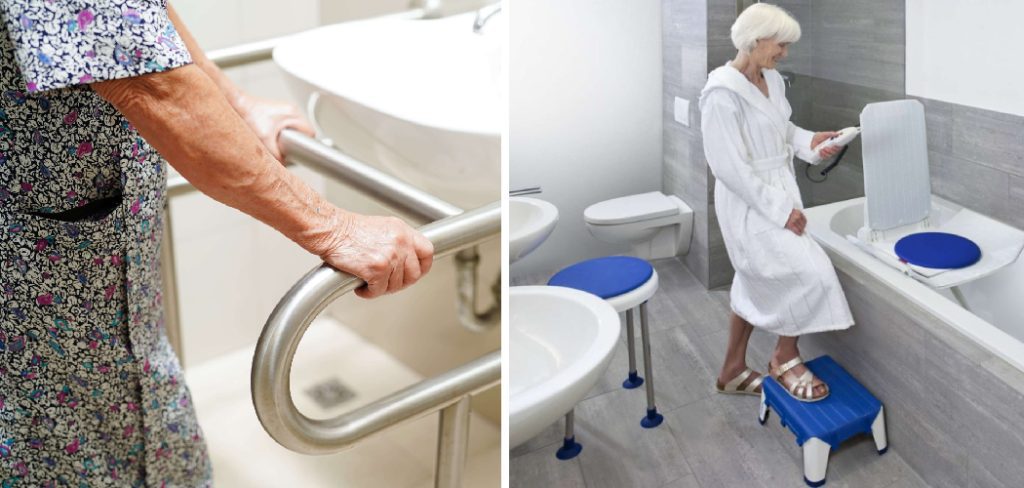
From installing grab bars and non-slip mats to adjusting water temperature and considering accessibility features, there are several steps that can be taken to create a safer bathing environment.
In this article, we’ll explore a range of tips for how to make a bathtub safe for elderly, techniques, and products designed to enhance the safety and comfort of elderly individuals while using the bathtub.
Whether you’re a caregiver, family member, or elderly individual yourself, join us as we delve into the essential considerations for making the bathtub a safer place for seniors to bathe independently and with confidence.
The Importance of Safety Considerations
The importance of implementing safety considerations in the bathroom for the elderly cannot be overstated. Bathrooms, and especially bathtubs, are areas where the risk of slips, trips, and falls significantly increases due to wet and slippery surfaces.
For elderly individuals, a fall can have far-reaching consequences, potentially leading to severe injuries, a loss of independence, or a decrease in confidence in their ability to care for themselves. By prioritizing safety in the design and layout of the bathroom, caregivers and family members can help prevent accidents before they happen.
This proactive approach not only safeguards the well-being of elderly individuals but also provides peace of mind for everyone involved. Safety modifications in the bathroom can significantly enhance the quality of life for the elderly, enabling them to maintain their dignity and independence while minimizing the risk of injury.
Making Bathtubs Safe and Accessible
To make bathtubs safe and accessible for the elderly, several modifications can dramatically reduce the risk of falls and improve the ease of use. Firstly, installing grab bars in strategic locations around the bathtub offers support and stability when entering and exiting the tub.
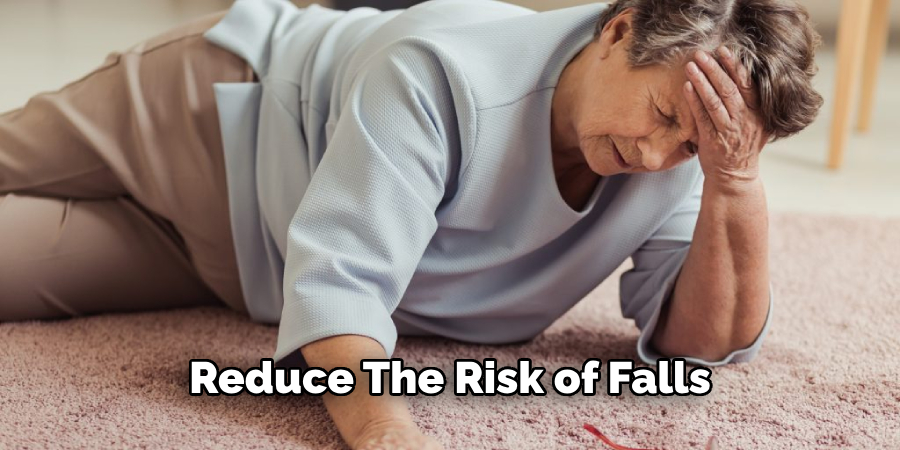
These bars should be secured to the wall studs to ensure they can support the weight of an individual without detaching. Non-slip mats inside the bathtub and on the bathroom floor are essential to prevent slipping on wet surfaces.
Additionally, incorporating a shower seat or a transfer bench can significantly aid those who have difficulty standing for extended periods. For enhanced accessibility, walk-in bathtubs or tubs with doors are an excellent option, as they eliminate the need to step over a high threshold, drastically reducing the chance of falls.
Faucet and showerhead controls should be within easy reach and easy to operate, preferably with lever-type handles that don’t require a strong grip. Lastly, setting the water heater to a maximum of 120°F (48.8°C) can prevent burns, which are a common hazard for elderly individuals with sensitive skin.
Each of these modifications contributes to creating a safe, accessible, and comfortable bathing environment for the elderly, fostering independence and ensuring their safety.
Assessing Individual Needs
Before implementing any safety modifications in the bathroom, it’s crucial to assess the individual needs of the elderly person. Each person has unique challenges and limitations, which means a one-size-fits-all approach may not be suitable.
Starting with a comprehensive assessment conducted by a healthcare professional, occupational therapist, or a knowledgeable caregiver can provide valuable insights into the specific requirements of the elderly individual. This evaluation should consider the person’s mobility, strength, balance, and cognitive function, as these factors will influence the types of modifications and aids that will be most beneficial.
For instance, an individual with limited mobility may benefit more from a walk-in bathtub, while someone with balance issues might require multiple strategically placed grab bars.
Additionally, consider the user’s height, weight, and any medical conditions that could affect their use of the bathtub or need for particular safety features. By tailoring the bathroom modifications to the individual’s specific needs, caregivers can ensure a higher level of safety and enhance the elderly person’s ability to bathe independently and confidently.
Conducting a Thorough Assessment of The Current Bathtub Setup
Conducting a thorough assessment of the current bathtub setup is a critical step in making a bathroom safe for elderly individuals.
This process involves evaluating the existing conditions and identifying potential hazards that could compromise the safety of seniors. Start by examining the accessibility of the bathtub, including the height of the tub walls and whether there are any existing support mechanisms, such as grab bars or anti-slip surfaces.
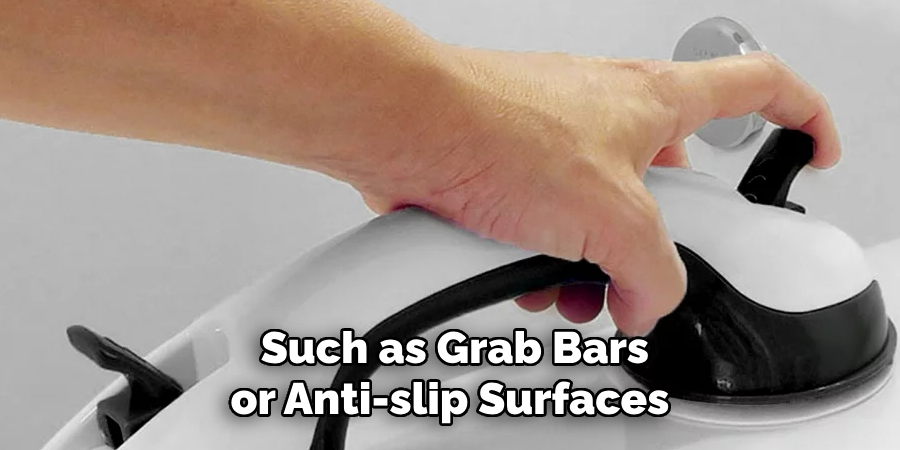
Check the condition of these features to ensure they are secure and free from damage that could lead to failure during use.
Additionally, assess the bathroom layout to determine if there is sufficient space for mobility aids, should they be needed, and if the lighting in the area is adequate to safely navigate the space. Evaluate the flooring outside of the bathtub for slip resistance and consider the need for non-slip mats or upgrading the floor material.
Pay attention to the water temperature settings and the ease of access to faucet controls, as these can present risks of scalding or make it difficult for elderly individuals with limited dexterity to control water flow. Finally, consider the overall condition of the bathtub and bathroom to identify any other potential risks or areas for improvement. This comprehensive assessment will provide a solid foundation for making informed decisions about necessary modifications to enhance safety and accessibility for elderly users.
Installing Grab Bars
Installing grab bars in the bathroom is one of the most effective ways to enhance safety for elderly individuals. Properly installed grab bars provide support and stability, making it easier and safer for seniors to enter and exit the bathtub, use the toilet, and move around the bathroom. When installing grab bars, it’s important to adhere to specific guidelines to ensure they offer the maximum safety benefits:

- Location: Grab bars should be placed at strategic locations around the bathtub or shower and beside the toilet. For bathtubs, install a bar on the wall at the shower head’s height, another along the side wall, and one near the tub’s edge to aid in getting in and out. In shower stalls, place grab bars on three walls if possible.
- Height: The height of grab bars should be customized to the user’s needs but typically range between 33 to 36 inches (approximately 84 to 91 centimeters) from the floor.
- Secure Installation: It’s crucial that grab bars are anchored securely into wall studs, not just the drywall or tile, to ensure they can support the weight of an individual. Use a stud finder to locate studs and heavy-duty screws for installation.
- Type of Grab Bars: Choose grab bars with a diameter of 1¼ to 1½ inches (approximately 3.2 to 3.8 centimeters), as they are easiest to grip. Ensure the bars have a non-slip surface for a secure hold even when wet.
- Length and Orientation: The length of grab bars can vary depending on the space and specific needs of the user. They can be installed horizontally, vertically, or at an angle, depending on what provides the best support for the individual.
- Consider Professional Installation: If you’re unsure about how to properly install grab bars, consider hiring a professional. This ensures the grab bars are securely installed and positioned correctly for the best support.
Incorporating grab bars as part of a comprehensive approach to bathroom safety can significantly reduce the risk of falls and injuries for elderly individuals, fostering their independence and confidence in navigating the bathroom safely.
10 Methods How to Make a Bathtub Safe for Elderly
1. Install Grab Bars:
Mount sturdy grab bars in strategic locations around the bathtub to provide support and stability for elderly individuals when entering, exiting, or maneuvering in the tub. Place grab bars securely on the wall adjacent to the tub, near the entrance, and along the length of the tub for maximum assistance.
2. Use Non-Slip Mats or Strips:
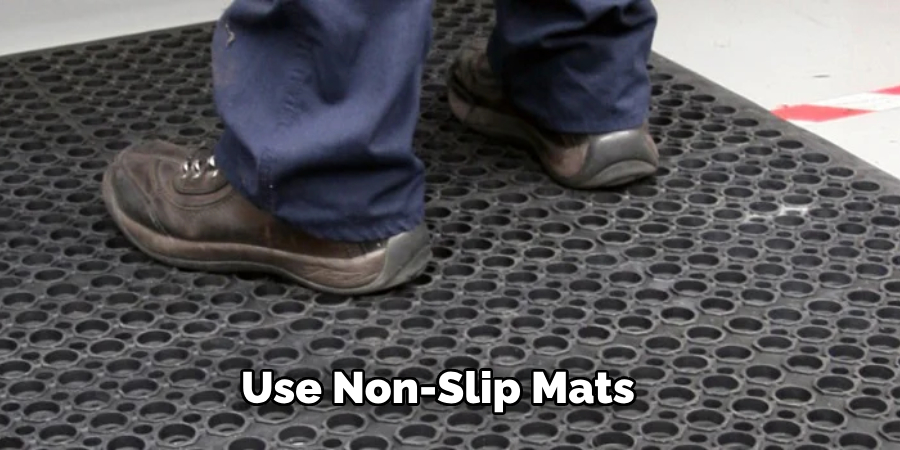
Place non-slip mats or adhesive strips on the bathtub floor to reduce the risk of slips and falls. These textured surfaces provide traction and grip, minimizing the chances of accidents, especially when the tub is wet. Ensure that the non-slip mats or strips are securely in place and replace them if they show signs of wear.
3. Consider a Bath Transfer Bench:
Invest in a bath transfer bench to assist elderly individuals with mobility issues in safely entering and exiting the bathtub. These benches typically feature a sturdy seat that extends partially outside the tub, allowing the user to sit down and then slide across into the bathing area. Choose a bench with non-slip feet for added stability.
4. Install a Shower Chair:
Provide a shower chair for elderly individuals who prefer to bathe while seated or require additional support during showering. Shower chairs come in various designs, including stationary and height-adjustable options. Ensure that the chair is stable and securely placed in the bathtub to prevent tipping or sliding.
5. Adjust Water Temperature:
Set the water heater to a safe temperature to prevent scalding or discomfort during bathing. The ideal water temperature for elderly individuals is typically between 100°F and 105°F (37°C to 40°C).

Test the water temperature before the person enters the tub and adjust the controls as needed to ensure a comfortable bathing experience. Though individuals with sensitive skin may prefer a lower temperature, it is important to maintain a minimum of 100°F (37°C) to ensure proper cleaning and sanitation.
6. Improve Accessibility:
Enhance bathtub accessibility by installing features such as bathtub grab bars, bathtub transfer benches, or walk-in tubs. These modifications make it easier for elderly individuals with mobility issues to enter and exit the bathtub safely.
Consider widening doorways or removing obstacles to accommodate wheelchairs or walkers if necessary. Non-slip mats or adhesive strips can also be placed on the bathroom floor to prevent slips and falls, especially when the floor is wet.
7. Provide Adequate Lighting:
Ensure that the bathroom is well-lit to enhance visibility and reduce the risk of accidents. Install bright, glare-free lighting fixtures above the bathtub area and along pathways leading to the bathroom. Consider adding motion-sensor lights to illuminate the bathroom automatically when someone enters the space.
8. Encourage Assistance and Supervision:
Encourage elderly individuals to seek assistance or supervision during bathing, especially if they have mobility limitations or balance issues. Caregivers or family members can provide support and assistance with tasks such as entering and exiting the tub, adjusting water temperature, and ensuring safety throughout the bathing process.
9. Perform Regular Maintenance Checks:

Establish a routine for inspecting and maintaining bathtub safety features to ensure they remain in good working condition. Check grab bars, non-slip mats or strips, and other safety equipment regularly for signs of wear, damage, or loosening. Replace or repair any faulty components promptly to maintain a safe bathing environment.
10. Consider a Walk-In Tub:
Explore the option of installing a walk-in tub for elderly individuals who have difficulty stepping over the bathtub’s high walls. Walk-in tubs feature a low threshold entry door that allows users to enter and exit the tub easily and safely. These tubs often include built-in seating, handrails, and therapeutic features for added comfort and convenience.
Adding Non-Slip Surfaces
Non-slip surfaces are essential for preventing slips and falls in the bathroom, particularly in the bathtub and shower areas where water accumulation increases the risk of accidents. Adding non-slip surfaces involves installing adhesive strips, mats, or coatings that provide traction underfoot.
When selecting a non-slip solution, look for materials that are specifically designed for wet environments to ensure long-lasting effectiveness and safety. Ensure that these surfaces are applied evenly and securely to cover the entire floor of the tub or shower, and regularly check them for signs of wear or peeling to maintain optimal safety.
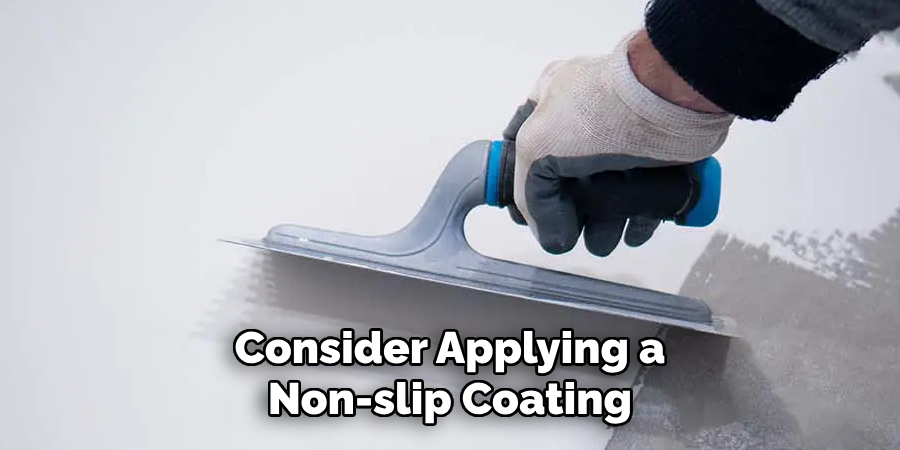
For a more permanent solution, consider applying a non-slip coating directly to the bathtub or shower floor. This option may require professional assistance but offers a durable and aesthetically pleasing safety feature.
Installing Non-Slip Mats or Adhesive Strips
To enhance bathroom safety for the elderly, installing non-slip mats or adhesive strips in the bathtub or shower area is a straightforward yet effective measure.
Non-slip mats should be selected based on their size and texture to ensure they cover a significant portion of the tub or shower floor without obstructing the drain.
When placing these mats, press firmly to expel any air bubbles between the mat and the surface to prevent it from shifting. Adhesive strips, on the other hand, should be evenly spaced and applied to clean, dry surfaces to maximize adhesion.
Choose strips that are specifically designed for use in wet conditions to ensure they provide a reliable grip over time. Both options require regular inspection and cleaning to maintain their effectiveness and should be replaced if they show signs of wear or begin to lose their non-slip properties. This simple step can significantly reduce the risk of slips and falls, promoting a safer bathing environment for elderly individuals.
Considering Non-Slip Coatings or Treatments
For those seeking a more integrated solution to bathroom safety, non-slip coatings or treatments present a promising option.
These products are designed to create a permanent anti-slip surface by chemically bonding with the bathtub or shower floor. Unlike mats or strips, these coatings do not require regular replacement and can provide a clear, nearly invisible finish, preserving the aesthetic appeal of the bathroom.
Application of non-slip treatments can be more complex, often necessitating professional installation to ensure the coating is applied evenly and effectively. However, once in place, they offer a durable, low-maintenance solution that significantly reduces the risk of slips and falls.
It’s important to select a coating that is compatible with the existing surface material of your bathtub or shower and to follow the manufacturer’s instructions for care to maintain its non-slip properties over time. This approach to enhancing bathroom safety combines functionality with a minimalistic design, offering peace of mind without compromising on style.
Conclusion
In conclusion, ensuring the safety of elderly individuals in the bathtub is crucial for preventing accidents and promoting independence and confidence during bathing.
By implementing the tips and techniques outlined in this article, you can create a safer bathing environment that addresses the unique needs and challenges faced by seniors. Whether it’s installing grab bars for support, adding non-slip mats for stability, or adjusting water temperature to prevent scalding, every precaution taken contributes to a safer bathing experience.
Additionally, considering accessibility features such as walk-in tubs or bathtub transfer benches can further enhance safety and accessibility for elderly individuals with mobility issues. Thanks for reading, and we hope this has given you some inspiration on how to make a bathtub safe for elderly!

